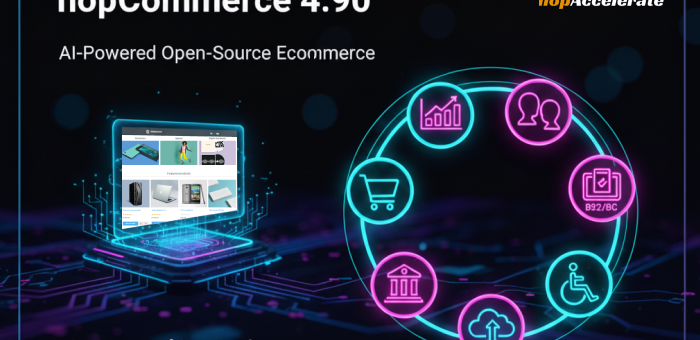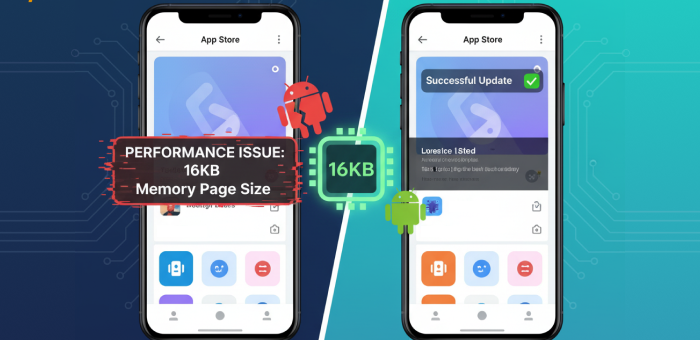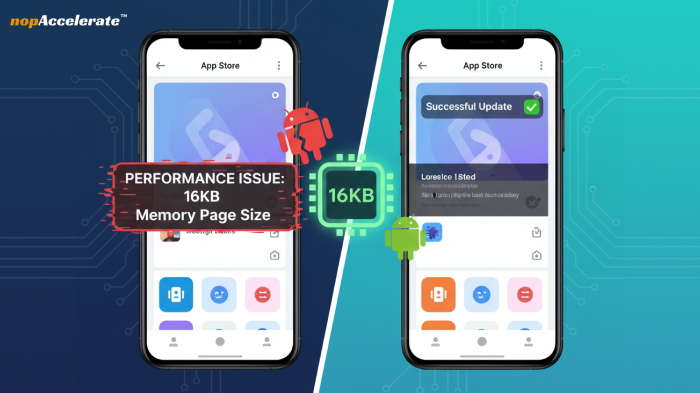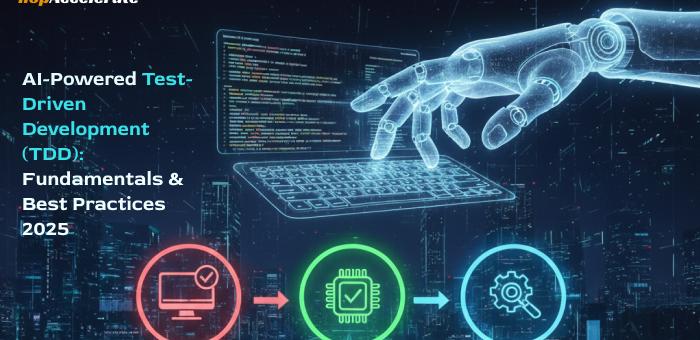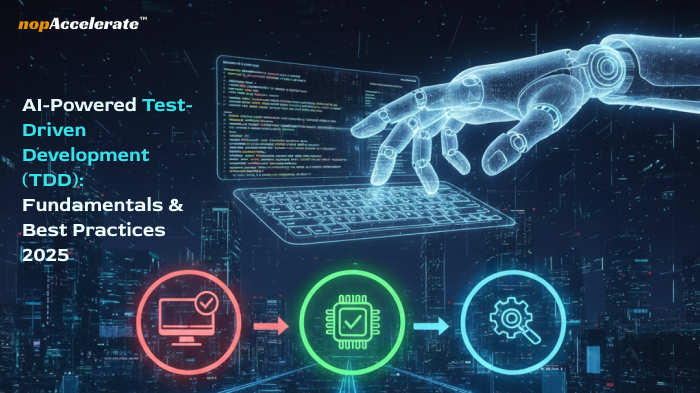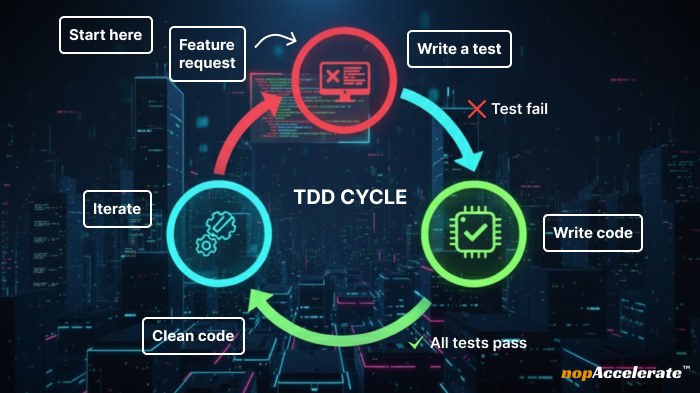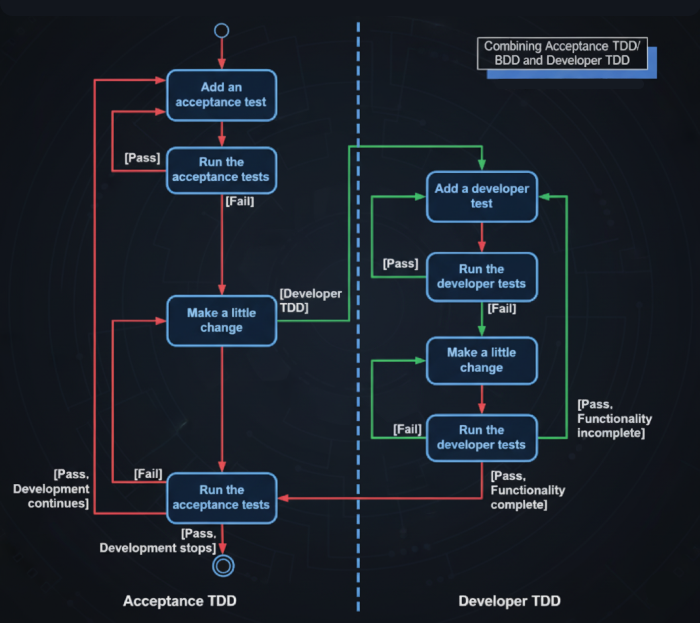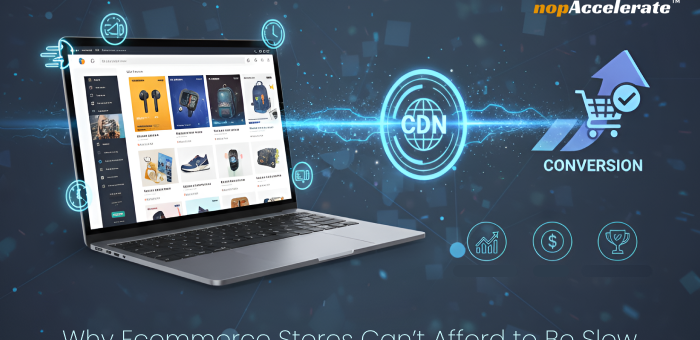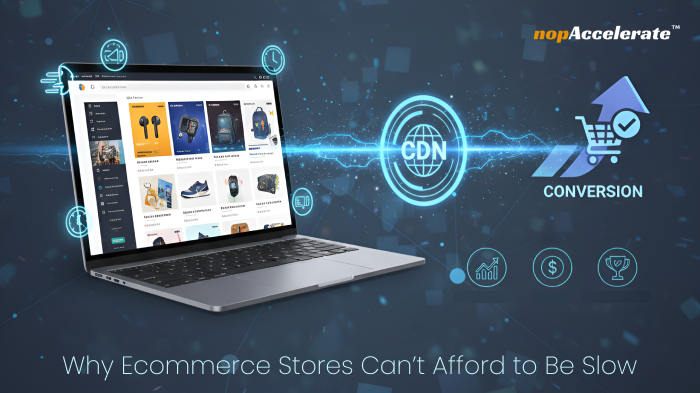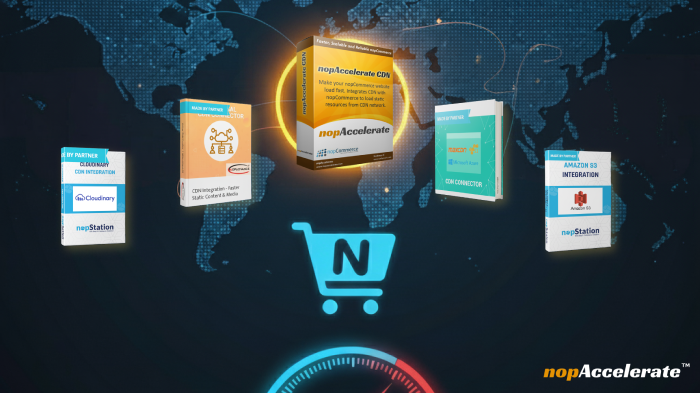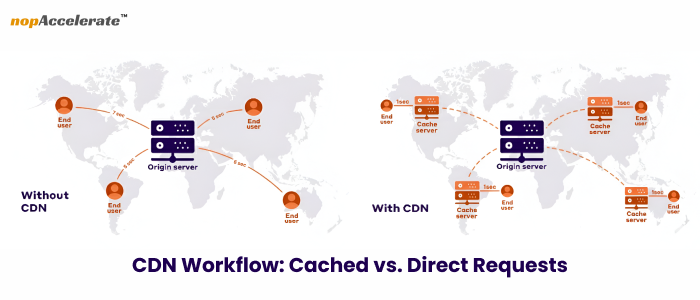Unlock Growth with nopCommerce 4.90 – The AI-Powered eCommerce Platform
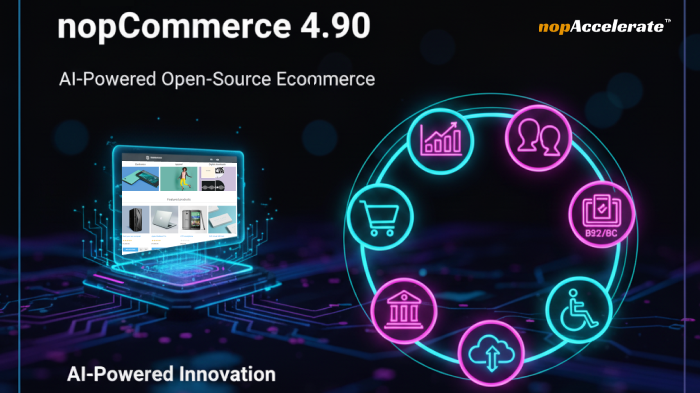
In 2025, achieving eCommerce success means more than just listing products online. Recent reports show that 73% of consumers expect personalized shopping experiences, while brands using AI-driven automation launch products up to 45% faster. The true leaders today are agile eCommerce teams that move faster, personalize smarter, and seamlessly serve both B2B and B2C customers across channels.
That’s where nopCommerce 4.90 stands out. This new release transforms the platform into a complete enterprise-grade ecosystem, integrating AI automation, strengthening core B2B workflows, and modernizing its technology stack for scale.
The result? Developers can build and maintain robust, future-ready stores with less friction, while business teams can launch faster, manage efficiently, and scale without the usual growing pains.
If you’re evaluating eCommerce platforms or planning an upgrade in 2025, this version deserves your attention. nopCommerce 4.90 combines AI innovation, accessibility compliance, and enterprise-level catalog management in one flexible, future-proof platform.
In short, nopCommerce 4.90 helps you launch faster today and scale confidently tomorrow, setting a new benchmark for modern open-source commerce.
What’s New in nopCommerce 4.90
1. Automate repetitive work with AI-powered content and SEO
Most online stores spend countless hours on routine tasks, writing product descriptions, updating SEO metadata, and manually translating content. As your catalog expands, so does the workload, often leaving teams overwhelmed with repetitive work that slows down growth.
How nopCommerce 4.90 helps:
With version 4.90, nopCommerce brings automation directly into your workflow through integrated AI capabilities.
After connecting your preferred AI service using an API key (for example, via Google Studio or OpenAI), the system can automatically generate and optimize content across your catalog.
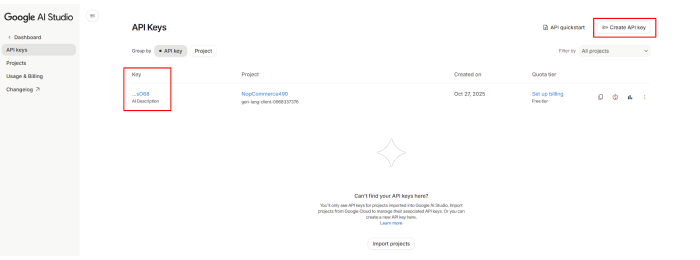
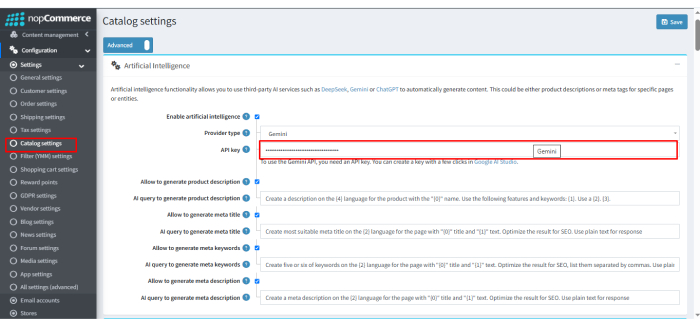
Merchants can now create unique, SEO-friendly product descriptions that highlight product benefits, maintain a consistent tone of voice, and save hours of manual effort.
Metadata such as titles, tags, and keywords can be refined through AI-driven SEO optimization, ensuring every page is search-friendly and consistent.
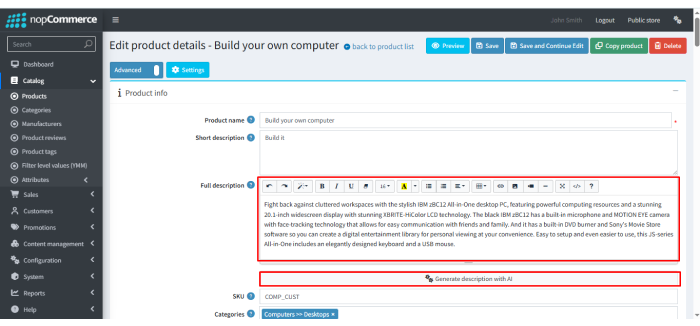
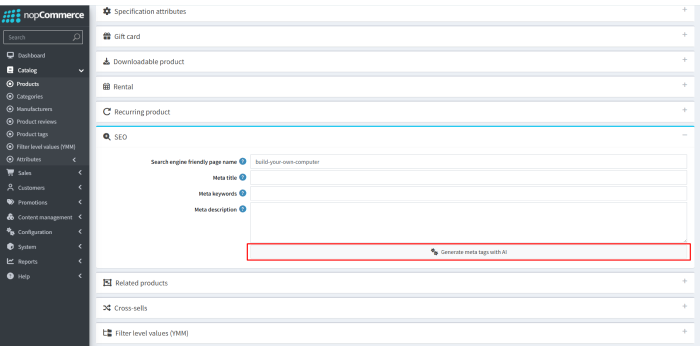
Additionally, the built-in AI-powered translation engine allows stores to publish content in multiple languages effortlessly. Enterprises can now localize product descriptions, categories, and campaigns at scale, ensuring global consistency and authentic engagement with customers in every region.
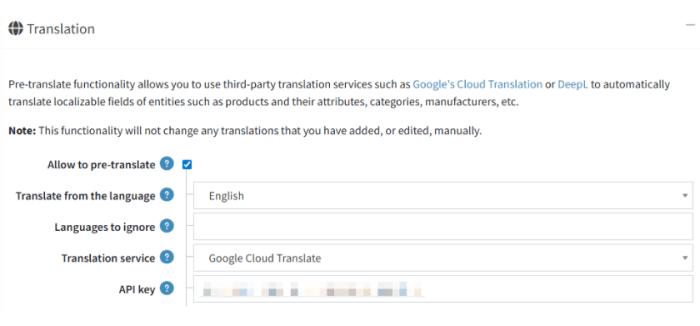
Highlights:
- AI-generated product descriptions deliver keyword-rich copy in seconds.
- AI-powered SEO optimization keeps metadata consistent and search-friendly.
- Automated multilingual translation helps you reach new regions faster.
Result: Less manual work, faster product launches, and improved SEO visibility, all without hiring extra staff or outsourcing content creation.
2. Manage B2B and B2C customers on one unified platform
Most eCommerce systems are built for either retail or wholesale. Managing both often means multiple stores, costly plugins, and inconsistent workflows.
How nopCommerce 4.90 solves it:
Request for Quote (RFQ) and Quote Management
Buyers can submit detailed requests from product or cart pages. Teams respond with formal quotes, track status, and convert to orders without switching tools. Negotiations become faster, clearer, and easier to manage at scale.
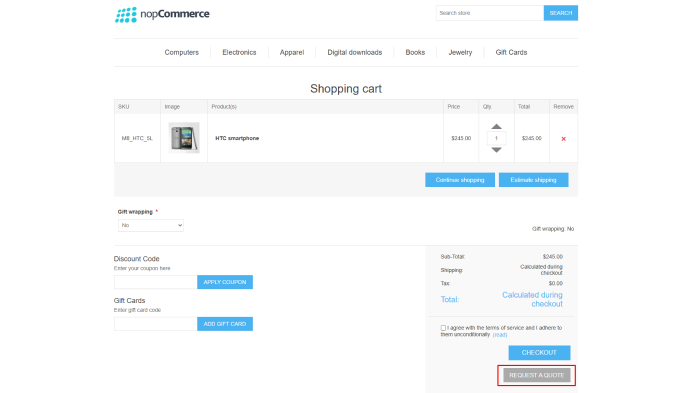
Multiple Wishlists
Shoppers can maintain separate lists for procurement, seasonal assortments, or personal planning. This small touch supports B2B purchasing cycles and improves repeat ordering for B2C.
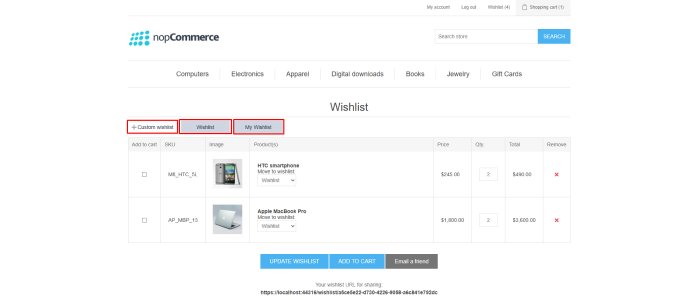
Automotive YMM (Year–Make–Model)
For parts and accessories, accuracy is everything. The YMM selector helps customers filter by vehicle details to find compatible items quickly, reducing returns and improving conversion.
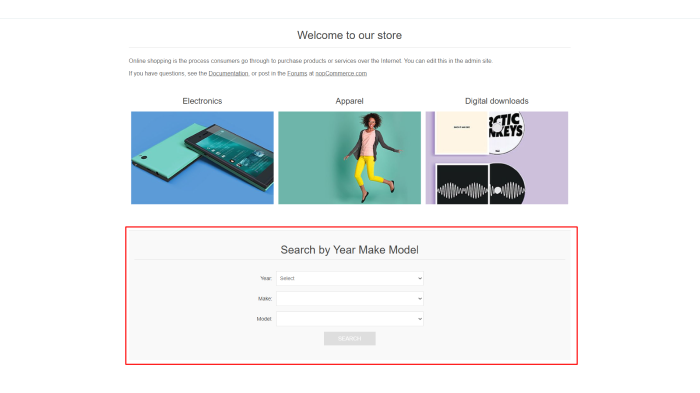
Mega Menu Navigation
Large catalogs become easier to browse with a visually rich, multi-column menu. Brands can surface categories, campaigns, and key pages without overwhelming the customer.
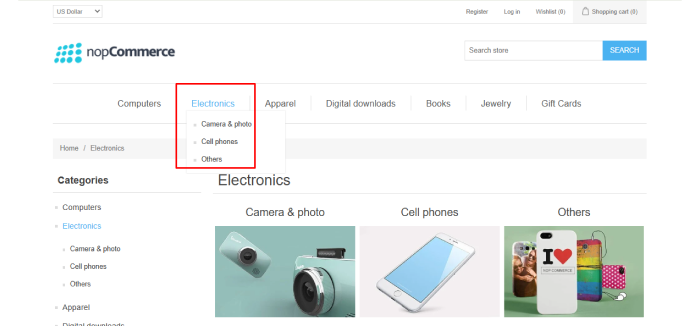
Multiple Newsletter Lists
Segmentation at the source. Maintain separate subscription lists by region, brand, product line, or customer type. Marketing teams can run targeted, localized campaigns while respecting consent rules and improving deliverability.
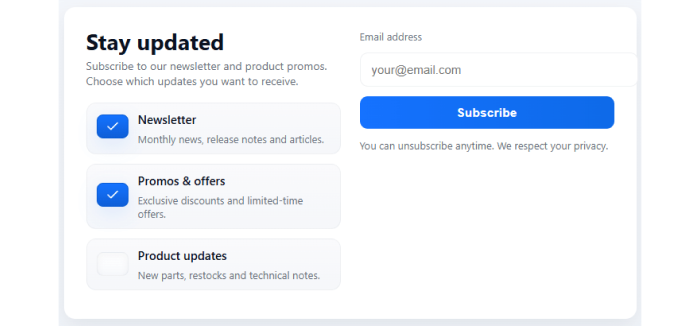
Highlights:
- Built-in Request for Quote (RFQ) and Quote Management for B2B negotiations.
- Multiple Wishlists to organize corporate, seasonal, or project-based shopping.
- Automotive YMM (Year-Make-Model) search for complex catalogs like auto parts.
- Mega Menu Navigation for large inventories with deep category structures.
- Multiple newsletter lists for precise, compliant segmentation.
Result: One platform that serves both audiences with streamlined processes, simpler management, and a consistent brand experience from discovery to reorder.
3. Boost speed and conversions with enterprise-level performance
Slow pages, clunky navigation, or poorly tagged products can quietly drain revenue. As catalogs grow, even minor performance lags or search inefficiencies multiply, hurting both conversion rates and SEO. Large eCommerce stores need infrastructure that scales smoothly, not one that slows under pressure.
How nopCommerce 4.90 improves it:
High-quality visuals attract buyers, but hosting and delivering them efficiently across regions can be costly. nopCommerce 4.90 integrates directly with Cloudflare Images, offloading image storage and serving optimized media through a global Content Delivery Network (CDN).
This integration ensures faster load times, better bandwidth management, and consistently sharp visuals on every device and connection.

The update also enhances product tag SEO, turning simple tags into search-friendly landing pages that strengthen discoverability and internal linking. Combined with the refined Mega Menu and smarter catalog navigation, customers can now find products faster, reducing bounce rates and increasing engagement.
Highlights:
- Cloudflare Images integration delivers high-speed, optimized media globally.
- Improved product tag SEO turns tags into real landing pages for search engines.
- Mega Menu and refined catalog navigation enhance customer discovery.
Result: Faster load times, stronger SEO, and smoother user experiences that drive sales.
4. Build global credibility with accessibility and compliance
Many online stores fail accessibility tests, excluding users and risking non-compliance with laws like the European Accessibility Act (EAA).
Enterprises can confidently offer inclusive online experiences while mitigating legal risk and expanding their reach to customers with diverse accessibility needs.
How nopCommerce 4.90 ensures compliance:
- Enhanced accessibility across all pages, better contrast, readable typography, and keyboard-friendly navigation.
- Fully aligned with EAA and modern accessibility standards.
Result: A store that welcomes everyone, meets international compliance, and strengthens your brand reputation.
5. Simplify operations with smarter admin and automation tools
As online stores grow, day-to-day management can become a major time sink. Manual updates, slow searches, and cluttered databases often slow down even the most efficient teams. nopCommerce 4.90 introduces a smarter, more automated admin experience designed to save time and keep operations running smoothly.
How nopCommerce 4.90 streamlines it:
- Searchable dropdowns make navigation inside admin faster.
- Bulk email requeue eliminates repetitive message handling.
- Maintenance and cleanup tools keep databases fast and storage light.
- Security updates add better logging and failed login tracking.
Result: More control, fewer bottlenecks, and smoother operations for teams managing large catalogs and multi-store environments, all with less manual effort.
Why new stores should launch with nopCommerce 4.90
Entrepreneurs launching new online stores face two big questions:
- Which platform supports long-term growth without hidden costs?
- How do I balance flexibility with automation?
nopCommerce 4.90 answers both
- It includes enterprise-ready AI, SEO, and B2B tools from the start.
- Open-source architecture means full ownership of code, data, and design.
- Built on .NET 9, it’s optimized for performance, security, and modern deployment.
- Strengthen store security and prepare for regulatory requirements with built-in monitoring and accessibility improvements.
For existing nopCommerce stores: why upgrade now
If you’re running an older version, this update brings immediate improvements:
- Faster content creation and SEO management through AI.
- Stronger accessibility and multilingual support.
- Better catalog navigation and product tagging.
- Improved admin speed and analytics visibility.
- More secure foundation with .NET 9 support.
Conclusion: the future of enterprise eCommerce
eCommerce in 2025 demands platforms that are intelligent, fast, and adaptable. nopCommerce 4.90 meets that need with powerful AI automation, flexibility, and enterprise reliability.
For growing and established businesses alike, it’s a future-ready upgrade that simplifies operations and scales with confidence.
As a trusted eCommerce tech partner, nopAccelerate helps you upgrade or build seamlessly. Contact our nopCommerce professionals to future-proof your store today.
